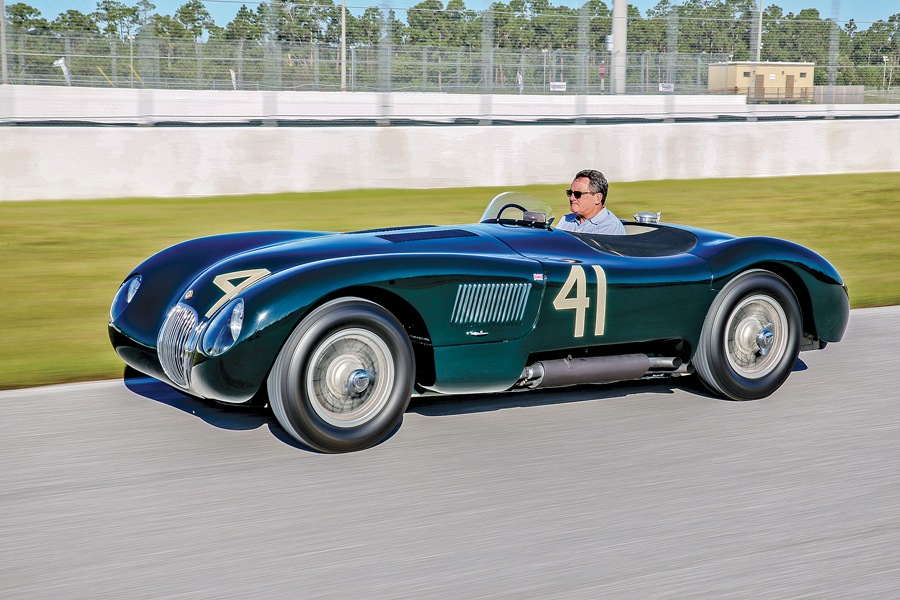Chassis Number: XKC007
This stunning C-type is just the seventh example of 53 cars in the chassis number sequence, and it wears the ninth body constructed. Chassis number XKC007 also claims important SCCA racing history in the hands of the legendary Phil Hill.
The Jaguar debuted as number 41 at Elkhart Lake in early September of 1952. As his son Derek recalls, Phil Hill actually drove the Jaguar himself from California to Wisconsin for the race. There, Hill won the Sheldon Cup race outright and finished 4th in the main event. The Sheldon Cup victory was the first win by a C-type in the United States. Having driven the car to the race, Hill then drove it back to Los Angeles!
Piloted by the illustrious Phil Hill to the first-ever win by a C-type in the United States, this important Coventry sports-racer is undoubtedly one of the most historically significant privateer examples of the celebrated model. As Hill later recalled, “I was just in awe of the C-type when I first stepped into it. When I look back on it now, it makes me smile. The steering was light — almost scary light. It was the first car I ever drove that had a really precise feel about it — it really felt like a racing car.”

